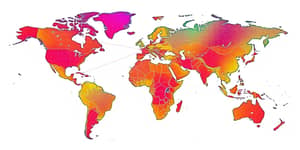In 2025, global banking has entered a transformative era driven by cutting-edge artificial intelligence. From small community banks to multinational financial institutions, near-universal adoption across global banks has become the norm. As AI weaves into every core function—from fraud detection to customer engagement—financial services are redefining efficiency, profitability, and risk management.
This article explores how AI has reshaped the banking landscape, delivers data-rich insights, showcases real-world case studies, and highlights emerging challenges. Readers will gain practical understanding of strategies that will unlock new potential in their organizations.
The Scale of AI in Modern Banking
By early 2025, an estimated 92% of banks worldwide had deployed AI in at least one core function. Spending on AI is projected to exceed $73 billion by year-end 2025, marking a 17% annual increase from 2024. Industry experts forecast that AI will contribute $1.2 trillion to the sector’s bottom line by 2030, with 2025 serving as the pivotal inflection point for measurable ROI.
- Adoption rate: 92% of global banks now leverage AI technologies[2].
- Projected AI spend: $73B in 2025, up from $35B in 2023[8].
- Profit impact: Sector profits could expand by 9%, reaching $2T by 2028[4].
Top Use Cases Transforming Banking
AI’s applications span the financial lifecycle, automating routine tasks and uncovering new insights. Below is a consolidated view of how banks are deploying AI across critical functions:
These innovations illustrate how AI has become a fundamental enabling technology for operations, driving both speed and precision.
Quantified Impact and Real-World Transformation
Across banking functions, AI is delivering hard metrics that validate strategic investments. Loan application cycles have shrunk by over 60%, while fraud detection systems now flag suspicious activity with unprecedented accuracy. More than 54% of U.S. bank customer interactions are fully automated, freeing staff to focus on complex, high-value tasks.
- Efficiency gains: Automation reduces document processing from days to minutes.
- Customer automation: AI handles over half of routine banking interactions.
- Revenue uplift: AI-driven cross-selling and personalization boost fee income.
At one midsize bank, integrating alternative data into credit models expanded loan access to underserved communities, exemplifying AI’s ability to foster financial inclusion.
Risks and Challenges on the Horizon
Despite its promise, AI introduces new risks that banks must manage carefully. Increasing reliance on sensitive data elevates concerns over privacy and cybersecurity. Automated processes can create single points of failure, amplifying systemic risk if algorithms are compromised.
- Data privacy breaches due to complex data ecosystems.
- Operational dependency leading to potential algorithmic failures.
- Regulatory complexity as global frameworks struggle to keep pace[3].
To address these challenges, institutions deploy advanced RegTech solutions and conduct rigorous model audits. Establishing transparent AI governance is now considered an industry imperative for sustained trust.
Gaining Competitive Edge: Lessons from Leaders
Leading banks distinguish themselves by embedding AI at the heart of their enterprise strategy rather than treating it as a series of isolated pilots. Key differentiators include:
- Enterprise-level AI roadmaps aligning front office, back office, and compliance.
- Continuous talent development programs that blend data science with banking expertise.
- A culture of experimentation, where small-scale tests rapidly scale upon success[4].
Employees are no longer sidelined by automation; instead, they collaborate with AI systems to deliver enhanced relationship-driven services that deepen customer loyalty.
The Road Ahead for AI in Banking
Looking beyond 2025, AI is poised to drive further breakthroughs in predictive analytics, embedded finance, and real-time regulatory reporting. However, its trajectory will be shaped by evolving human factors and legal frameworks. Institutions that invest in robust data ethics policies and dynamic upskilling will emerge as industry frontrunners.
As AI technologies mature, banks must balance pursuit of innovation with prudent risk oversight. Those that succeed will unlock new revenue streams while bolstering resilience in an increasingly complex environment.
In conclusion, 2025 marks a watershed year in which AI’s promise in banking transitions from pilot programs to full-scale transformation. By embracing strategic, enterprise-wide AI integration, banks can achieve unprecedented levels of efficiency, customer satisfaction, and profitability—effectively unlocking their full potential in the digital age.
References
- https://softjourn.com/insights/ai-ml-banking-applications
- https://coinlaw.io/ai-in-banking-statistics/
- https://www.getfocal.ai/blog/banking-technology-trends
- https://ergomania.eu/ai-trends-banking-2025/
- https://rtslabs.com/ai-use-cases-in-banking/
- https://www.morningstar.com/stocks/banking-industry-trends-how-digitization-data-ai-are-redefining-us-banking-landscape
- https://www.ncino.com/news/ai-accelerating-these-trends










